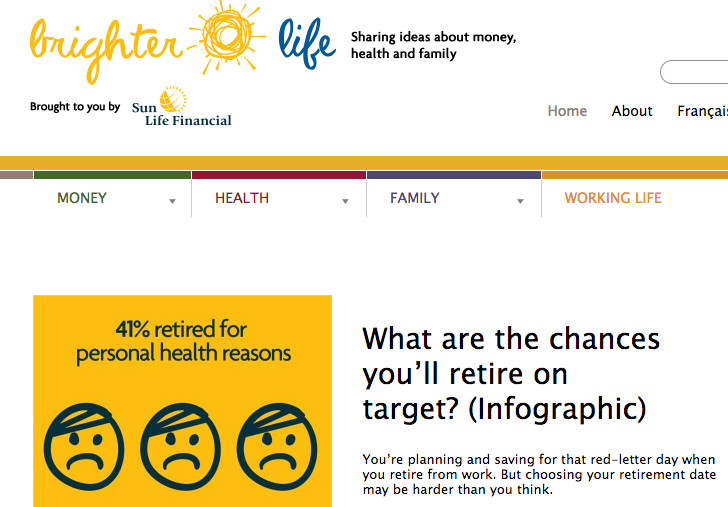
As I interview new candidates for content marketing positions on my team, there is one question I feel necessary to ask: “How will you handle writing for B2B accounts?” What I am really asking is, “Are you OK writing for what may be considered boring topics, and how will you make each piece interesting?”
The truth is, I don’t want to hire someone who will become bored or overwhelmed by the topics we most often write about and jump ship just months after joining the team. The candidates I gravitate toward are the ones who have answers like, “To me, there are no boring topics. It is all about understanding what type of content the audience wants and giving it to them. I know how to sniff out a story, which makes any topic interesting.” Agreed!
However, there are still some topics that could use a little push away from boring into “interesting” territory. Here, we look at how eight organizations sniffed out their stories to become some of the most interesting content on the web.
1) Develop Your Own Voice
No matter your product, service or industry, you must start with your own unique voice and tone. If you sound like everyone else, buyers have no reason to pay you any interest. Case in point? There are a million sites out there offering business advice for owners, but none quite like the Middle Finger Project.

Ashley Ambirge, the brains behind the project, uses language that will make you blush. But she also answers questions you’re too embarrassed to ask and writes in a language that is actually a hoot to read. Don’t be shy…take a peek.
The Takeaway: Find your voice before you try anything else!
2) Ease Your Audiences’ Concerns
You’ve heard of FICO; you’ve probably checked your score a few times. And there’s nothing more boring than a credit score. But FICO’s primary audience is made up of businesses, and the website discusses topics such as predictive analytics and decision management. (OK maybe there is something more boring than credit scores.) But FICO’s goal behind its content is to “help businesses around the world fulfill their potential.”
To do just that, FICO’s blogs are broken down into incredibly useful themes, including Collections & Recovery, Risk & Compliance and Fraud & Security, all of which are related to decision makers’ daily concerns. Additionally, the organization produces on-demand webinars to help companies fight debit card fraud, use big data for marketing and optimize business models.

The Takeaway: Issues, challenges and concerns may be considered a pain in the butt, but they certainly aren’t boring to the people experiencing them. Solve your audiences’ issues because that is never boring.
3) Make Your Product Real to Buyers
I hate watching television shows without using my DVR to fast-forward past commercials. So when I paused the other night to watch a commercial about printers, I knew it had to be good. For a product so mundane as office supplies, HP really showed how a boring printer could affect a family. Check it out for yourself:
It is so important to think bigger than your product or service. Find out how you can truly impact your buyers’ lives and run with it. Your audience will be more than willing to pause and take a look.
The Takeaway: Your audience doesn’t care about your product; they care about how using your product will change their lives. Tell that story.
4) Tell Your Story in a Human Way
Does your organization have the power to change the world? Banking isn’t what anyone would call exciting, but TD Bank does have the power to make a difference—and so it did. With the #MakeTodayMatter campaign, which presented 24 people with a 24-hour challenge to improve their communities with $30,000, TD take a heartwarming approach to managing money.
While we may not all have millions to give away, you can highlight how your brand is making a difference in the community.
The Takeaway: Inspiring stories of people helping people never go out of style. Show your brand is human by showing you care.
5) Think Small—And Local
Did you know American Express launched Small Business Saturday (the day after Black Friday) in 2010? The holiday aligns with the company’s OPEN Forum, which functions as an online community where millions of business owners visit each month.
To take the idea a step further, Amex created a new series of Local Business Stories. The idea is to showcase businesses making in impact in their communities.

The multimedia narratives are not only impressive, but serves as a great example of turning a tedious topic like running a small business into an enticing story about moving business forward.
The Takeaway: Imagine how your small stories can make a big impact, then tell the world about it.
6) Put Your Users Front and Center
GoToMeeting’s “Meeting is Believing” video series is what I consider spot-on marketing. These videos feature real GTM customers rather than just “talking heads.”
The videos showcase the GTM platform in use, but it’s not the focus of the videos. Instead, the benefits the software provides—better meeting dynamics, face-to-face interactions, happy customers—are at the heart of these 1-minute stories.
The Takeaway: Focus your content (better yet, a consistent series!) on how your product improves lives and, if possible, let your customers do the talking.
7) Form an Emotional Connection
To be fair, babies are cute. And babies can always be used to sell diapers. But if you really think about it, diapers are booorring. That’s why Huggies took a different approach to making its brand stand out among its competitors.
By forming an emotional connection with expecting mothers, Huggies gains a foothold before purchase decisions are even made.
The Takeaway: Find the heartstrings and give them a little tug.
8) Create Useful Tools
Sun Life Financial knows its audience doesn’t really care about insurance. It cares about making the right decisions for their families and their futures. That’s why the organization expanded its content strategy with Brighter Life to include themes such as money, health, family and career advice above and beyond insurance.

Then the brand took it one step further, developing quizzes, calculators and tools for planning the boring parts of life so their users could enjoy the not-so-boring parts.
The Takeaway: Think outside of blog posts to more interactive content your customers can rely on for a little help with life’s complicated tasks.
No matter the topic, someone will find it boring. Don’t let that rattle you. There is an interesting, intriguing and entertaining story behind every brand. Use these tips to tell yours and your readers won’t be able to get enough.
![]()







